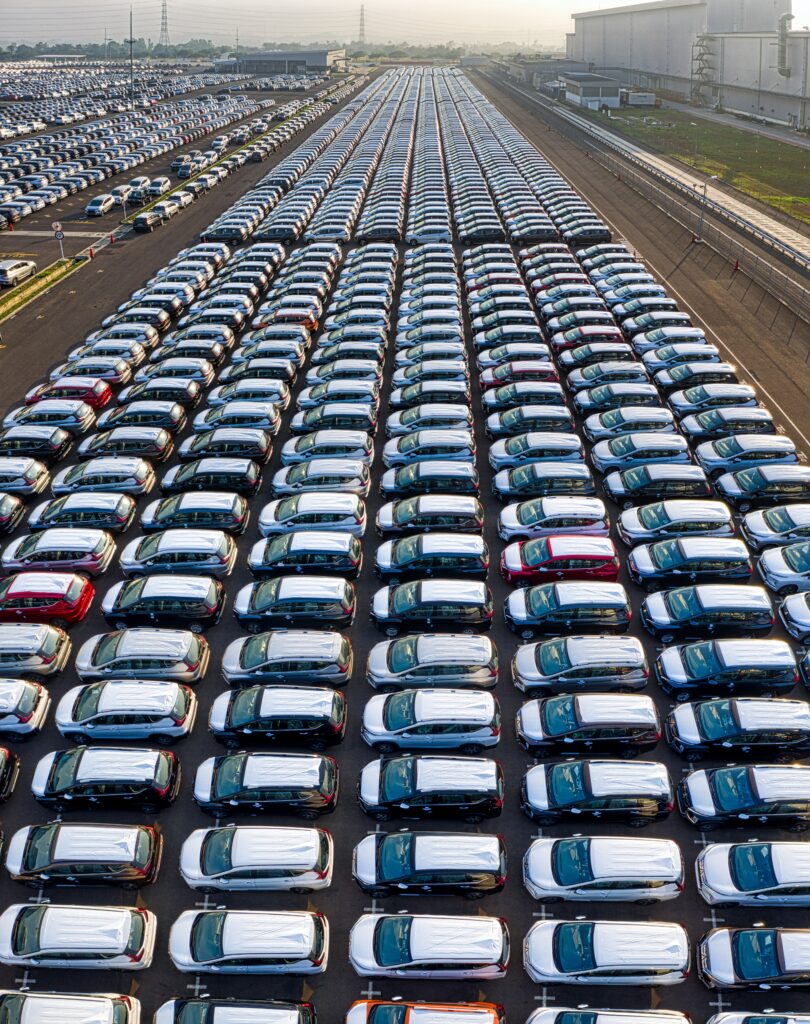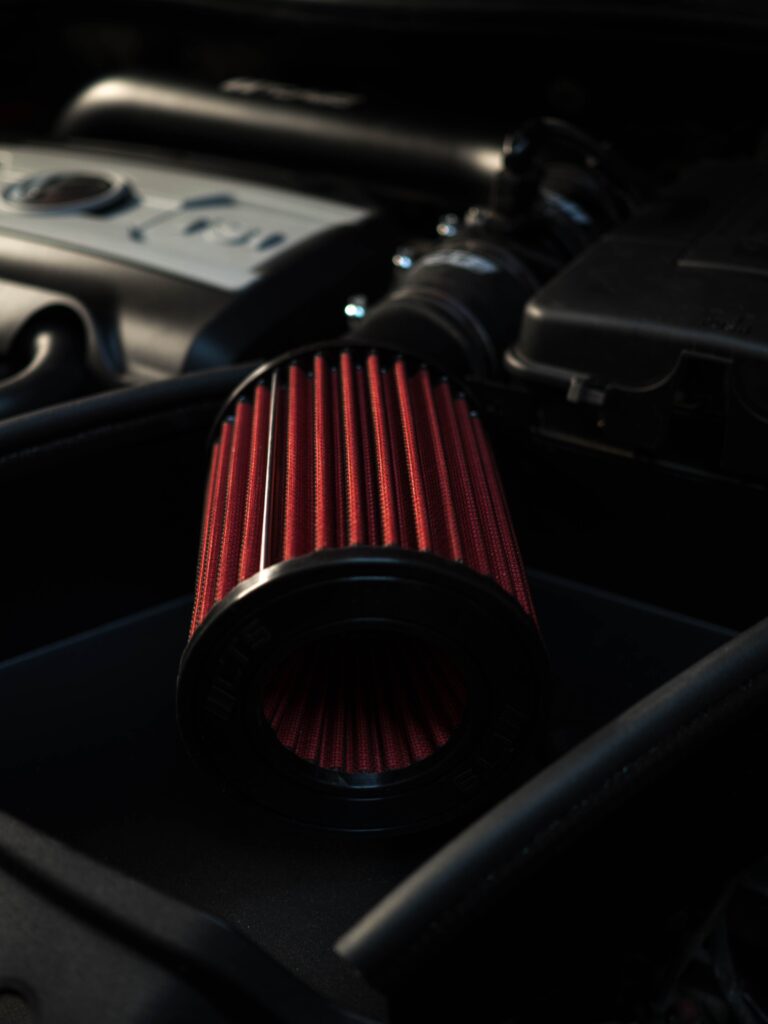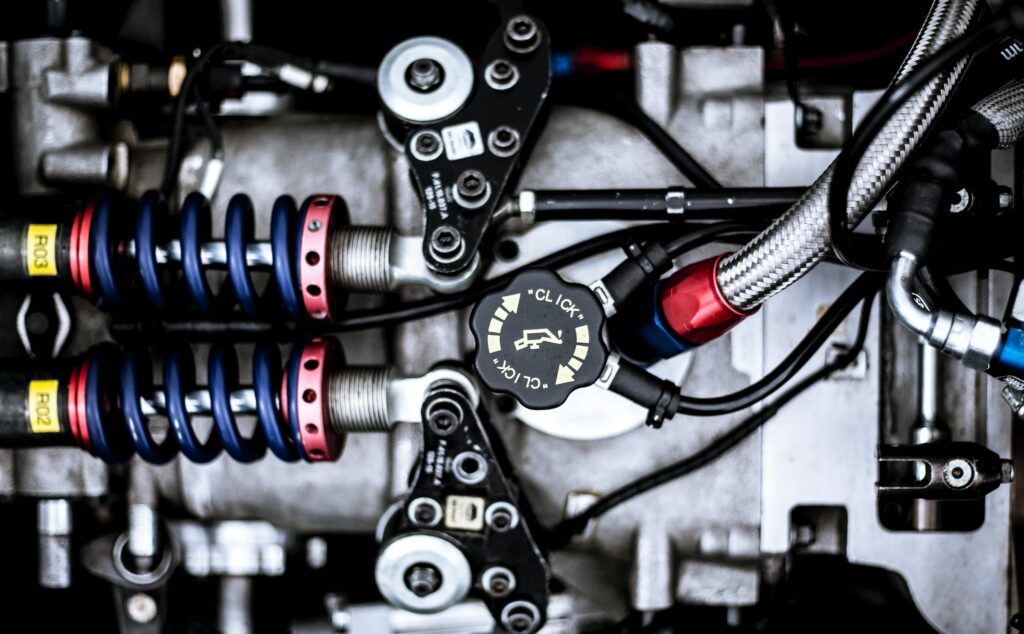445fbbdc946985c62bd2e2ee946e5f74
9c3ce4e920792e63e8ccf33876009b4a
9c3ce4e920792e63e8ccf33876009b4a
9c3ce4e920792e63e8ccf33876009b4a
9c3ce4e920792e63e8ccf33876009b4a
9c3ce4e920792e63e8ccf33876009b4a
In a nutshell, refinancing a vehicle means replacing your current car loan or finance agreement with a new car loan to revise your debt repayment schedule. In other words, applying for another loan to repay your old debt. As the new loan is usually lower than your existing loan, vehicle refinancing may be a way to save money on your monthly car repayments.
This saving can result from obtaining a loan at a lesser amount, extending the repayment period or negotiating a lower interest rate. Some banks and lending houses also offer the option of refinancing a vehicle that is fully paid up, should it qualify.

It is important to understand what the term means and when or when not to refinance a vehicle. One school of thought advocates that you should rather consider selling your car before you look at refinancing it. However, the decision is not always that simple. “If the new loan is at a lower interest rate, for example, that could save you some money in the long run,” explains Lebogang Gaoaketse, Head of Marketing and Communication at Wesbank.
It is important to carefully consider the pros and cons of refinancing a vehicle, so it is advisable to do some research on the most favourable loan terms and interest rates, before making a final decision.


There isn’t a one-size-fits-all solution to structuring a car refinance deal. By being honest with yourself and knowing how much you can afford on the vehicle repayment, you would be better informed about your options.
By Vuyi Mpofu
Understand that warm air holds more water vapor than cold air, and the warm air inside your car absorbs moisture from your breath and other damp items within your car. When it’s cold, the outside air cools the glass on your car (windows, windscreens, mirrors, etc), making it possible for the moist air inside the car to condense and fog up the glass.
While it might seem like the quickest way to deal with fogged up glass is to simply wipe it off with a cloth, your hand or a piece of tissue, but that is not the solution. The safe option is to adjust the environment that is causing the fog so that more condensation doesn’t form.

In cold temperatures, the answer to defogging your windows – and keeping them clear – is warm, dry air. Simply turn on your car’s heater and air-conditioner to warm up and dry the inside air. Don’t forget to adjust the vents towards the glass so that the warm air is directed at it. Once the glass is clear you can turn off or lower the temperature of the heater and air-con.

Another say to reduce fog from forming on your windows is to simply keep them clean and clear, particularly the inside of the glass. When dirt and fog combine, your visibility is drastically reduced. Regularly use window cleaner to help prevent fog from forming to begin with.
Since the Golf R’s launch in South Africa in 2007, the hatch has sold close to 6 000 units. The new Golf 8 R’s drive technology tops everything that has been launched in the Golf model range thus far. The corresponding drive output is generated by a 2.0-litre four-cylinder EA 888 engine. The new Golf 8 R accelerates to 100 km/h in just 4.8 seconds. The top speed is 250 km/h. The Golf 8 R impresses with the combination of 400Nm of torque, cutting-edge running gear and the most progressive all-wheel drive in its class.
Standard features in the Volkswagen Golf 8 R include mobile inductive charging, panoramic sunroof, keyless entry with safelock, ‘Discover Pro’ navigation system, Wireless App-Connect and Voice Control, 19-inch Estoril alloy wheels, Adaptive Chassis Control including driving profile selection, Light and Vision Package including light assist, Nappa leather R sport seats as well as a choice of three exterior colours (Pure White, Lapiz Blue metallic and Deep Black Pearl).

Optional features in the Volkswagen Golf 8 R include IQ.Light LED Matrix headlights, Akrapovič R Performance exhaust, Head-Up Display, Harman Kardon sound system, Parallel Park Assist, Rear Assist with a rear view camera, Blind spot monitor with Rear Traffic Alert, Lane Assist and electronically folding side mirrors, Travel Assist with Lane Assist and Adaptive Cruise Control, Adaptive Cruise Control with Front Assist, Autonomous Emergency Braking System as well as the Black Performance Package (includes drift mode, an increased top speed of 270 km/h and black 19-inch Estoril alloy wheels).
“Production constraints and parts shortages severely derailed our launch plans, but we are excited to finally extend the performance range in South Africa with the introduction of the new Golf 8 R. The Golf 8 R joins the Golf GTI and the Tiguan R as Volkswagen’s performance derivatives in the South African market,” said Steffen Knapp, Head of the Volkswagen Passenger Cars brand.
Recommended Retail Price (VAT and emissions tax included)
Golf R 2.0 TSI 235kW DSG® R912 800
The Golf 8 R also comes standard with a 3 year/120 000km warranty, 5 year/ 100 000km EasyDrive Maintenance Plan and a 12-year anti-corrosion warranty. The service interval is 15 000km
Press Release: Wesbank
The South African Reserve Bank (SARB) has recently announced a further hike in the repo rate of 50 basis points. This is the second rise in interest rates this year, following a 25 basis points increase by the SARB’s Monetary Policy Committee at the end of January. With the repo rate now standing at 7.75% from 7.25%, the current prime lending rate shifts from 10.75% to 11.25%, its highest level since 2009.

This increase directly impacts people who are paying off loans such as vehicle finance or a home loan coupled to the interest rate, as the monthly repayment will increase. In a weak economy with slower inflation, the high cost of living and increasing food prices, many South Africans are struggling to stretch their already-strained budgets to reach month end. The new repo rate announcement puts added pressure on consumers.
“An interest rate hike has a ripple effect across all sectors of the economy. Our customers are not unaffected by this higher cost of borrowing either,” comments Lebogang Gaoaketse, Head of Marketing and Communication at WesBank. “Those customers whose vehicles are financed through WesBank with a fixed interest rate, are not affected by the rate hike. However, those customers who opted for a linked rate will see their monthly car repayment increasing.”

The interest rate affects the amount a bank or finance house such as WesBank charges you for borrowing money. The amount you need to pay back is determined by the interest rate on your finance agreement and, despite the latest increase, is still relatively low for anyone repaying a vehicle finance loan. When buying a vehicle, new or used, customers have the option to choose between a fixed or linked (variable) interest rate for their vehicle finance agreement.
As it stands, a fixed interest rate will not change for the duration of your payment period. This can work in your favour, especially if the interest rate is as volatile as is currently the case in South Africa, and you want the security of a constant fixed monthly repayment. If the rate drops. you will continue to be charged the agreed higher fixed interest rate.

A linked interest rate is linked to the prime lending rate and fluctuates with the SARB’s repo interest rate. If the rate increases, as it has recently, so will your repayment amount. However, if it is lowered, you will benefit from a lower monthly repayment and have some extra money in your account. Linked interest rates are usually slightly lower than fixed.
“It is also important to remember that vehicle ownership is more than the initial price tag. You also need to take into account the monthly repayments plus the added costs of fuel, comprehensive insurance cover, as well as general maintenance and service expenses. And, of course. the interest rate hikes that continue to directly impact consumers’ monthly budgets,” comments Gaoaketse.

There isn’t a one-size-fits-all solution to structuring a car finance deal. Knowing how much you can realistically afford on the vehicle repayment, including interest rates and other increases, will stand you in good stead. But, it’s not only about cars. The increased interest rate also impacts credit cards, home loans and clothing accounts among others. Consumers with additional debt will notice the increased repayments starting to affect their budgets, as household debt levels in South Africa remain at high levels.
Rising interest rates and inflation, brought on by a deteriorating Rand, a tough economy and other global factors, could see buyers postponing new vehicle purchases, buying down or even exiting the new car market altogether in favour of better value in the used car market.
To maintain the health of your tyres and ensure your safety on the road, it’s important to adopt safe driving habits. This includes driving within the recommended speed limit, taking corners carefully and smoothly, avoiding overloading your vehicle, and driving on well-maintained roads as often as you can.
Here are some ways your driving style can affect your tyres:
The most common driving style that damages your tyres is hard acceleration and driving at high speeds, both of which cause your tyres to wear out faster due to increased heat and friction. High friction produces increased heat, which in turn leads to tyre wear. Additionally, hard acceleration causes bits of rubber from the tyre to shred and chip off, thereby further increasing wear and tear. Similarly, speeding increases heat and friction, putting more stress on your tyres. The best thing to do is drive gently to help improve the longevity of your tyres.

Similar to hard acceleration, hard braking can also lead to premature tyre damage. Frequent emergency braking has an adverse effect on the car’s suspension and leads to uneven wear of tyres. Driving in city traffic often includes hard braking, but this can be minimised by maintaining a safe following distance, keeping your hands on the wheel and your eyes on the road.

Taking corners too quickly or aggressively can also cause your tyres to wear unevenly, as the outside edges of the tyres are constantly under stress. This can lead to poor grip and reduced handling, making your vehicle less safe to drive.
Overloading your vehicle beyond its recommended weight limit causes excessive stress on your tyres. The tyre of a car is designed to carry a particular maximum weight as prescribed by the vehicle manufacturer. This weight is known as the load rating and is marked on the tyre’s sidewall and in the car owner’s manual. By overloading your vehicle, you increase pressure on the tyre, weakening its internal structure which not only leads to faster wear and tear, but an increased risk of tyre bursts.

Driving on rough or poorly maintained roads such as potholes and debris causes your tyres to wear out faster, as they are exposed to more friction. Hitting harshly against a curb can easily cause cracks on the rubber of a tyre and damage the wheel, rim, steering components and suspension. Remember to drive slowly and carefully in built-up areas and look out for unmarked curbs.
Regular tyre checks and maintenance can help detect any potential issues before they become major problems. By changing your driving habits, you can extend the life of your tyres and enjoy a safer drive.
Drunk driving plays a huge factor in road fatalities annually but there are other causes of accidents and fender benders. Here are just 10 of the most common bad driving practises which can be seen on our roads almost daily.
Driving at a speed that is unsafe for the current road, weather and lighting conditions can make it difficult, if not impossible to control your vehicle effectively. Bringing a speeding vehicle to a stop or trying to avoid an obstacle on the road can have fatal consequences as you may lose control completely. Speed limits are designed to keep drivers safe and it is dangerous to exceed them. Regardless of your environment, aim to drive at a pace which allows you to safely manoeuver your vehicle through curves, down a hill or in the rain.

Executing a safe lane change involves quite a few essential steps such as checking your mirrors and blind spot, adjusting your speed, turning on your indicators, finding a safe gap then merging smoothly into the lane. It is important to remember to look out for cyclists and bikers as these motorists are incredibly vulnerable in an accident.
Three things are critical for safe driving being: your hands on the wheel, your eyes on the road and your mind on the task at hand. Driving distracted negates these essentials, putting all road users at risk. Multi-tasking is not something motorists should attempt to do because of the ever changing environment of the road and general traffic. Anything can and most likely will happen without notice and you need to be ready to react immediately – something you may not be able to do if you are texting, eating or your eyes are on the radio controls.

Many motorists drive distracted resulting in their following the vehicle ahead of them too closely. The best way to ensure you have a safe cushion of space between your car and the one ahead is to wait for the leading vehicle to pass a fixed point on the road, then start counting to three. Should you pass the same point before reaching the count of three then you are most likely following too closely. As a general rule of thumb always increase your following distance at night, when driving behind a truck, in bad weather or when driving behind a motorcycle or cyclist.
This may surprise a few but driving too slowly for the current traffic conditions can be dangerous. Driving too slowly forces other drivers to either slow down or attempt to pass you and the more often cars pass each other, the greater the chances of there being a collision.

Road signs are there to give motorists information relating to the road or traffic conditions. It is important not to ignore them as you could find yourself driving too fast into a curve or blasting through a stop sign.
Failure to stay in your lane is a definite way of annoying other motorists or causing an accident. In many instances drifting between lanes is due to driving distracted but can also be thanks to poorly marked roads or unskilled driving practises. With the exception of changing lanes always aim to steer your vehicle within your chosen lane.

Sadly, driving a less than mechanically sound vehicle is common practise on our roads which leads to avoidable road accidents. Ranging from worn brakes, faulty indicators and tail lights, to cracked windscreens, dim headlights and damaged wiper blades, driving a vehicle which isn’t in tip-top condition puts you and other road users at risk. When you think about it, the cost of changing certain car parts is far less than the cost of repairs to a car so it’s worth getting your vehicle regularly by a professional.
Being attentive on the road is a highly underrated driving skill, but one which could save your life. Should a toddler dash onto the road in front of you, or if a parcel falls off the truck in front you, you need to be ready to take evasive action. Attentive driving includes being aware of your surroundings and knowing where the open spaces are that you can escape to.

Similar to driving under the influence, there is no excuse for driving while drowsy. A safe drive includes being alert, attentive and in control of your vehicle, all of which you cannot do if driving while drowsy. Make sure you get sufficient rest before getting behind the wheel as tiredness can be fatal.
If your nausea is so bad you can’t get off the bathroom floor, you probably shouldn’t be getting into the driver’s seat. Barfing while in the car can be unpleasant but barfing while driving is pretty complicated, especially when you consider that nausea often comes with dizziness and light-headedness, which are just two more no-no’s for driving while pregnant.
If you have to push your seat back from the steering wheel so much you can’t reach the brake pedal; or you need to tuck the shoulder belt behind you because it’s too tight across your newly endowed chest etc.
Whatever the accommodation you’re making, if your pregnancy is forcing you to drive in an unsafe position, you need to quit — at least until you can go back to sitting the way you’re supposed to.
Doing anything else increases your risk for traffic accidents, not to mention bodily injury with even normal driving, like if you need to make a sudden stop.
Speaking of sudden stops, don’t get in the car if you won’t be able to schedule a few breaks along the way to your destination.
When you’re pregnant, you’re at a higher risk for something called deep vein thrombosis (DVT), a blood clot that often starts in the leg and can move up to your lungs, causing severe and potentially fatal consequences.
The best way to avoid a serious blood clot while driving is by doing everything possible to keep that blood flowing, and that means lots of breaks to walk and stretch. Also, you’ll need to stay hydrated, which means lots of loo breaks!
4. Don’t drive when… your pregnancy limits your movement
If you can’t turn around to see your blind spot, you’re going to have a problem which could compromise your safety.
When your belly is enormous, your back pain is raging, or you’re just too stiff and awkward to check your mirrors or rotate your upper body from side to side while driving, you should opt not to drive at all.
5. Don’t drive when… you can’t pay extra-close attention to the road
Everybody everywhere should be focusing on the road while driving, and this word of warning rings especially true when you’re pregnant because you’re already more susceptible to distractions thanks to nausea, heartburn, insomnia, aches and pains, stress, anxiety, and pregnancy brain.
And distraction makes you extra vulnerable to human error.
If you don’t trust your ability to drive like you’re pre-pregnant self, its bet to catch a ride with someone else.
This might sound like a no-brainer, but try to avoid driving yourself to the hospital when you’re in labour! It’s just not safe: Even the mildest of contractions can escalate and intensify out of the blue, leaving you incapacitated.
Whether you’re the driver or the passenger, getting in a car during pregnancy usually won’t harm you. You should still take some basic precautions, though, to keep yourself extra safe on the road.
Pregnancy hunger is real. You don’t want to be caught far away from home without any way to hydrate and refuel your body with.
If you’re still experiencing morning sickness, keep crackers, ginger ale, and mints — or whatever your personal nausea remedy is — in your car, as well as a stash of plastic shopping bags, tissues, and disinfecting wipes to handle any sudden-onset of the vomits.
Your pregnant brain is already all over the place — you don’t need anything else taking your attention off the road. Silence those texts and calls until you reach your destination.
No matter how minor the fender bender or how fine you feel afterward, call your OB-GYN or midwife and ask to be seen for an exam, just to be sure. The best-case scenario is that this ends up feeling unnecessary — but we doubt you’ll regret getting that peace of mind.

There are situations when you should let someone else get behind the wheel or skip the drive altogether. But these aren’t the norm: If you can comfortably and safely sit in the driver’s seat without worrying about distractions, sickness, or limited movement, you’re set to keep driving well into your pregnancy.
Life is becoming increasingly expensive, so it’s understandable that you’d want to find the most affordable ways to get all those important things taken care of – including your car. If you’re on a tight budget, you’d be happy to know that there is an option beyond genuine parts to fit onto your vehicle, and that comes in the form of generic alternatives.
Manufactured and sold at a significantly lower price than what you’d pay for the original parts from the manufacturer, generic parts allow people to maintain their cars on a budget.
But what are the differences really, and is it safe to opt for generic parts?

What Is The Difference Between Genuine and Generic?
In all honesty, there isn’t much of a difference. Generic parts are very much like generic medication: they were designed to be exact replicas of the original.
Generic parts are typically directly reverse-engineered from the original components and look exactly the same. In fact, often, the difference between the two comes down to a brand name or packaging.
Original parts, also called OEM, or Original Equipment Manufacturer, are the exact same parts your car was fitted with when it was originally assembled. Generic parts are very much like generic medication: they were designed to be exact replicas of the original.

Is It Safe To Have Generic Parts Installed?
A lot of car manufacturers and manufacturer-approved service technicians insist that it’s unwise and unsafe to install generic parts in your vehicle if you care about its longevity and your own safety. However, as long as you purchase parts from a reputable retailer or auto parts franchise, the choice to buy a generic part should be quite safe.
One aspect that may differ is that generic car parts may not have the same warranty as original parts – or may not even come with any warranty at all, but this comes as part of the territory as you’re paying less for the part.

Another potential drawback is that the actual materials used to make the part may not be as durable as the OEM version, which means the part could wear down much sooner and have a reduced lifespan than the more expensive OEM part.
If you’re presented with the option of going for OEM or generic parts, be sure to find out about the reputation of the brand being offered to you. If a trusted car parts franchise sells generic parts and recommends them, you should be quite safe in making the purchase.
Again, just be aware that while the part will cost you significantly less, the old adage of “you get what you pay for” always rings true, so don’t expect the same durability and lifespan when fitting a generic part.